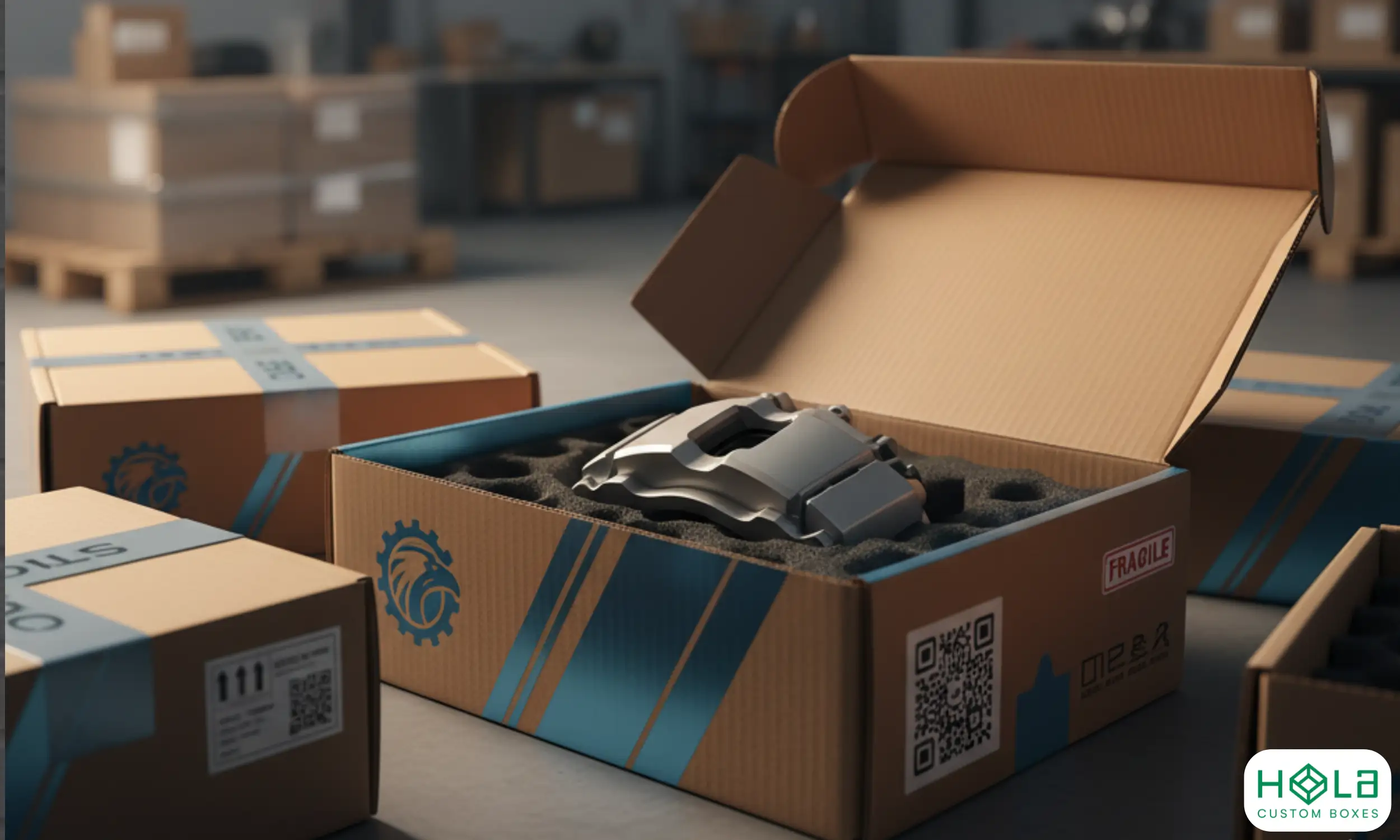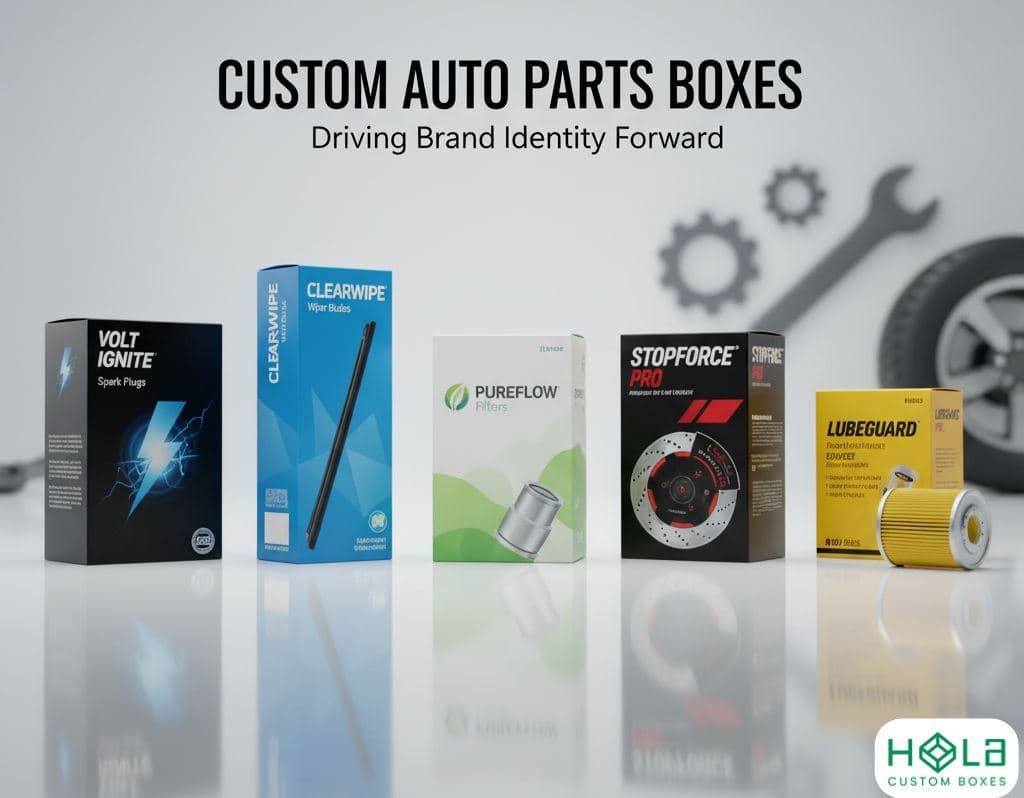Designing Durable Custom Packaging for Auto Parts: A Guide for Aftermarket Success
2025-09-27 20:38:53
Designing Durable Custom Packaging for Auto Parts: A Guide for Aftermarket Success
In the fast-paced, high-stakes automotive industry, the packaging that houses a replacement part is just as critical as the component itself. An OEM-quality spark plug, brake pad, or sensor is worthless if it arrives damaged due to flimsy or poorly designed boxing. For aftermarket auto parts brands, adopting custom auto parts packaging boxes is not merely a branding exercise—it's a critical investment in quality assurance, logistics efficiency, and customer trust. This guide will walk you through the essential steps to design packaging that is durable, compliant, and commercially effective, guaranteeing your products arrive ready for installation.
Engineering Custom Automotive Packaging to Prevent Damage
The primary function of automotive aftermarket packaging is protection. Auto parts are often heavy, irregularly shaped, sharp, or fragile, and they must withstand rigorous conditions during shipping and storage, including vibration, impacts, and environmental stressors.
Structural integrity is paramount. This requires selecting the appropriate board strength, usually measured in Bursting Strength (for single-wall boxes) or Edge Crush Test (ECT) for corrugated boxes. For heavy items like rotors or calipers, multi-wall corrugated cardboard is often necessary. Beyond the outer shell, custom inserts and protective foam are key. These internal elements must cradle the product, preventing movement within the box. Consider precision-cut foam, corrugated partitions, or thermoformed plastic trays that perfectly match the contours of the part. This prevents friction damage, especially for components with precision-machined surfaces or sensitive electronics. You can explore various durable options for your needs on our dedicated custom automotive packaging product page.
Optimal Material Selection for Heavy-Duty Auto Parts Boxes
Selecting the right material is where durability and cost-efficiency intersect. Ignoring the demands of heavy-duty auto parts boxes leads to catastrophic failures and costly returns.
For most non-fragile, high-volume parts, ECT-rated corrugated fiberboard is the industry standard. This material provides excellent stacking strength, crucial for warehousing. For components susceptible to corrosion (such as bare metal engine parts), the packaging should incorporate Vapor Corrosion Inhibitor (VCI) paper or film. VCI releases a protective chemical barrier inside the box, effectively preventing rust and extending the shelf life of the component. Furthermore, sustainability in custom packaging is increasingly important to business partners and end-users. We recommend sourcing materials with high Post-Consumer Recycled (PCR) content and designing boxes that minimize waste without compromising on protection.
Achieving Logistics Efficiency with Custom Sized Auto Parts Packaging
Efficiency in logistics starts with the box dimensions. Off-the-shelf boxes often result in excess void space, requiring unnecessary filler material and leading to inflated shipping costs—a major pain point in the auto parts distribution channel.
Custom sized auto parts packaging is optimized for perfect fit, minimizing dimensional weight (DIM weight) fees charged by carriers. This optimization also allows for more efficient pallet stacking and denser warehousing, translating directly into reduced operational costs. Additionally, the box design should consider handling. Integrated handles, easy-access closures, and clear, bold labeling contribute to quicker identification and safer manual handling for warehouse staff and mechanics. A well-designed, custom-fit box can significantly reduce the potential for shipping errors and streamline the supply chain from the manufacturer to the service bay.
Compliance and Regulatory Markings on Automotive Parts Boxes

Navigating the global automotive market requires strict adherence to various regulatory and marking standards. Automotive parts packaging compliance is essential to avoid delays, fines, and market access restrictions.
Your custom packaging must clearly display mandatory information such as:
Part Number and SKU: Prominent, easy-to-scan barcodes (often in Code 39 or QR format).
Country of Origin: Required for import/export regulations.
Safety Warnings: Specific hazard symbols (e.g., for chemicals or pressurized items).
Handling Instructions: Graphics indicating 'Fragile,' 'This Way Up,' or weight limits.
For parts destined for Original Equipment Service (OES) channels, strict adherence to OEM branding and labeling guidelines is necessary. Working with an experienced manufacturer ensures all mandatory markings are correctly positioned, printed with durable inks, and meet the clarity requirements for automated scanning systems.
Branding and Marketing Through Custom Printed Automotive Boxes
While protection is the primary goal, the box is also a vital marketing tool. Custom printed auto parts boxes are often the first and last physical touchpoint a customer has with your brand.
High-quality printing and graphics elevate the perceived value of your product. Instead of plain brown boxes, incorporate vibrant, full-color printing of your logo, brand message, and technical specifications. Consistent automotive packaging design across your entire product line builds instant brand recognition. Consider key features:
UV Coating/Gloss Finish: Adds durability and a premium, clean look.
Brand Colors: Use pantone-matched colors to ensure your corporate identity is consistent.
Installation QR Codes: Print QR codes linking directly to installation guides or video tutorials, providing added value to the end-user (the mechanic).
Investing in custom branding turns a utilitarian box into a professional representation of your company’s commitment to quality. To begin designing your branded and protective solution, visit our homepage.
Conclusion: Securing Your Success with Durable Custom Auto Parts Packaging
In the competitive aftermarket sector, the box is a silent promise of quality. By focusing on structural integrity, selecting appropriate materials like heavy-duty corrugated board, optimizing for logistics with custom sizing, ensuring regulatory compliance, and leveraging the box for branding, you secure your product's journey and strengthen your brand's reputation. Designing durable custom packaging for auto parts is a strategic move that protects your bottom line and paves the way for sustained aftermarket success.
